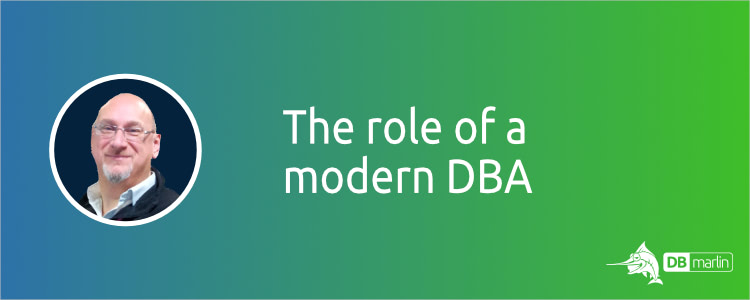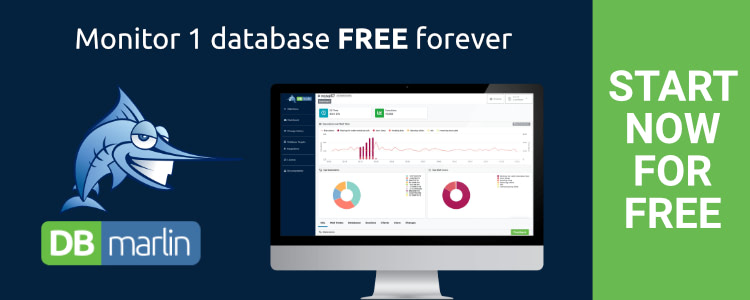The role of a modern DBA

The role of the DBA has evolved over time, but in some ways, our raison-d’etre has remained the same.
DBAs are the glue that brings different skill sets together and we are custodians of the corporate data. That means we need to have an appreciation of everything from networks, through servers and storage and up to the application in order to deliver a secure, performant, reliable service.
There have always been a number of specialities within the DBA community. There are Infrastructure DBAs whose focus is on how to make the database design into a living thing, ensuring it’s backed up and recoverable. There are Application DBAs who focus on the schema design and the SQL statements required by the application. There are then Database Architects and performance specialists. These roles are all still required in the data landscape of today, but what’s changing is our focus.
More data, fewer DBAs
Data is growing at 23% per year according to IDC and yet DBA roles have remained relatively steady since 2015, having only risen by 1% in the last year. In fact, as a percentage of total IT staff, DBAs have been slowly declining, from 3.3% in 2013 to around 2.9% in 2018 according to Computer Economics. However, new roles with names such as ‘DevOps Data Engineer’ have emerged, covering many of the same responsibilities as a DBA, so in reality, they are DBAs by another name.
More databases, more database engines
The number of available database platforms continues to increase and the variety of their specialist uses increases as well with offerings to cover high transaction rates, NoSQL databases, distributed unkillable databases through to Big Data and now the newly emergent hybrid variants. The Brainvire article “Top 20 Databases to Use in 2022” estimates the value of the DBMS market to be worth $79.2 billion for 2022. This demonstrates that not only is it an incredibly valuable market segment, it shows that today’s DBA needs to be conversant in more than one database management system.
According to DB-Engines Rankings the top five database engines in Feb 2022 are:
- Oracle
- MySQL
- SQL Server
- PostgreSQL
- MongoDB
The Cloud effect
According to Gartner, Cloud DBaaS (Database-as-a-service) was worth $26.2B or 40% of the total DBMS market ($64.8B) in 2021. Since almost all new growth is in the Cloud, they expect that sometime in 2022, Cloud DBaaS will exceed 50% of the DBMS market.
The Cloud makes it easy to deploy the best database platform matching the applications needs. This means that development teams will often choose different database platforms for different application services. So, whereas DBAs of the past could afford to specialise in one DBMS, today’s DBAs need to be multilingual.
In order to keep pace with the challenge of managing an increasing amount of data with proportionately fewer people, automation is the only way to survive. With cloud platforms now sharing 50% of the workload with on-prem databases, we’re seeing the automation of tasks we used to have our Junior DBAs perform - checking the backups and daily database health checks.
Comparing old and new roles of a DBA
When we compare the traditional role against what we see in the modern world, we can see a shift in emphasis. Some tasks are now taken care of by the Cloud vendors, some tasks remain the same, while some tasks are new.
| Traditional Role | Modern Role |
|---|---|
| Deployment | - |
| Backups | - |
| Healthcheck monitoring | - |
| Patching | - |
| Setting database policies | Setting database policies |
| Application SQL Design | Application SQL Design |
| Application Schema Design | Application Schema Design |
| Recovery | Recovery |
| Communication | Communication |
| Securing data access | Securing data access |
| - | Cloud cost optimisation |
| - | Data residency compliance |
Data is the new Gold
Today, automation and cloud deployments take care of the day-to-day tasks such as backups and patching, leaving us to focus on the important stuff; the data and the application.
As data is the new gold - this is where we earn our money, ensuring that the organisations data is secure and protected but can be accessed quickly by those that need it.
Fortunately tools such as DBmarlin were built to ensure databases run fast, so users can access the data they need without delays. It can cope with complex multiple DBMS or even multi-cloud landscapes. DBmarlin provides detailed views of performance and is backed by a knowledge-base which can help you understand any bottlenecks and provide guidance on how to improve performance.
Summary
One thing that hasn’t changed in today’s DBA role is the ability to communicate with everyone in the organisation. These days, where the company lifeblood - the data - is running through our hands incredibly fast, we still have the responsibility to keep it safe. This is, of course, why you will find us where the coffee supply is - the company communication hub.
The role of DBAs is certainly changing. This is due to huge increases in data, developments in cloud technology, improvements in automation and the ease with which multiple DBMS can be deployed by one organisation. Whether you call us Database Administrators or DevOps Data Engineers, the critical importance of data to our companies makes our role more important than ever.
As a closing note - what hasn’t changed over time is our love of coffee and cookies - provide us with these and we won’t let you down!
Ready to try DBmarlin?
If you would like to find out more about DBmarlin and why we think it is special, try one of the links below.
- Get hands-on without an installation at play.dbmarlin.com
- Download DBmarlin from www.dbmarlin.com, with one FREE standard edition license, which is free forever for 1 target database.
- Follow the latest news on our LinkedIn Community at linkedin.com/showcase/dbmarlin
- Join our community on Slack at join-community.dbmarlin.com

